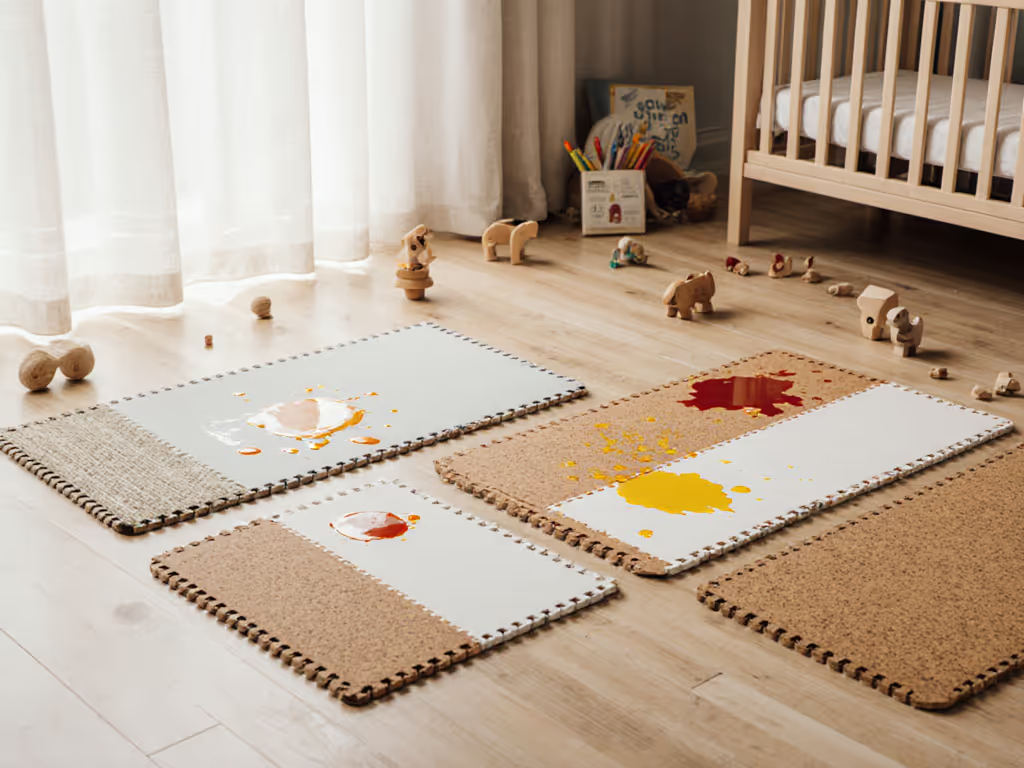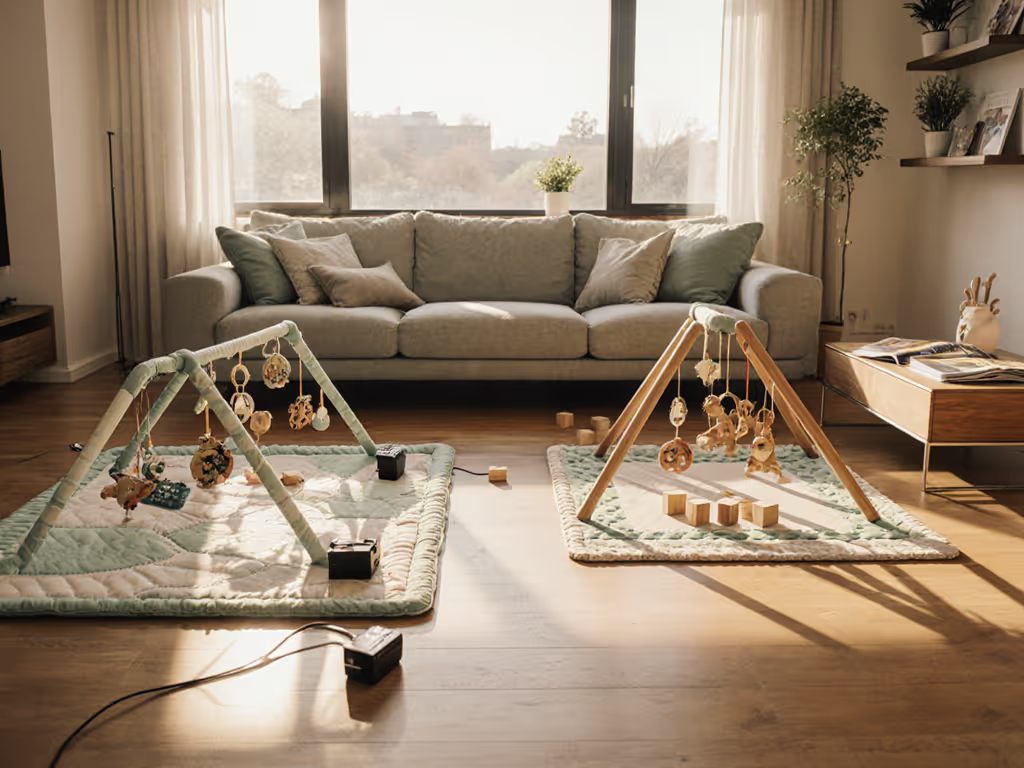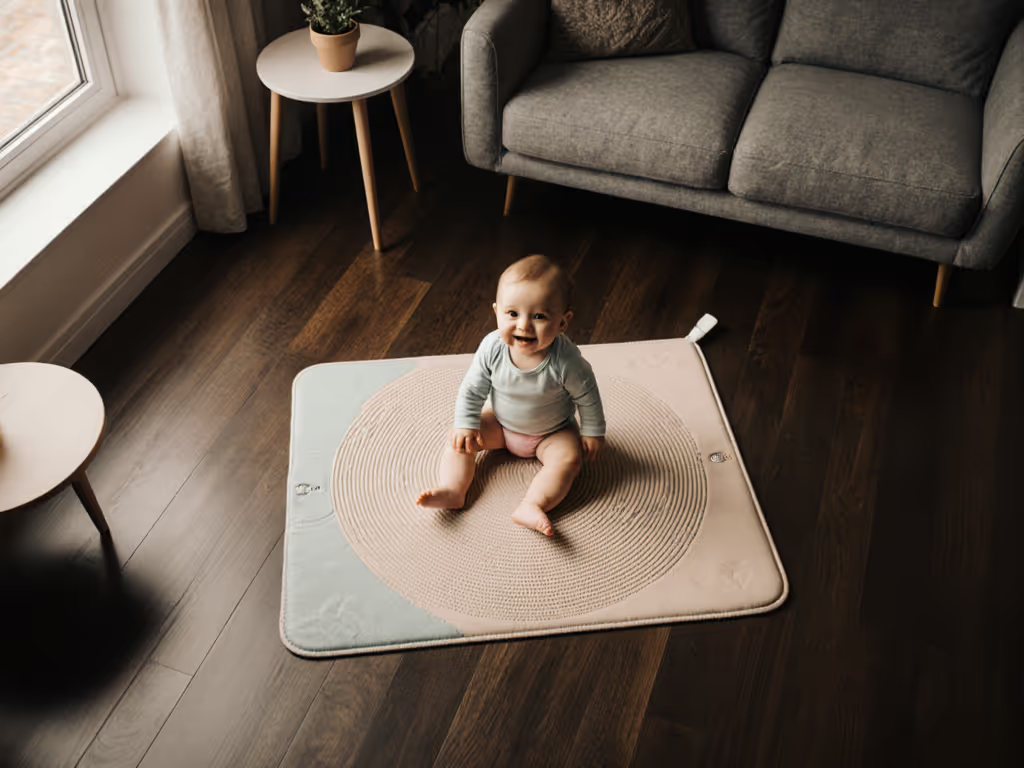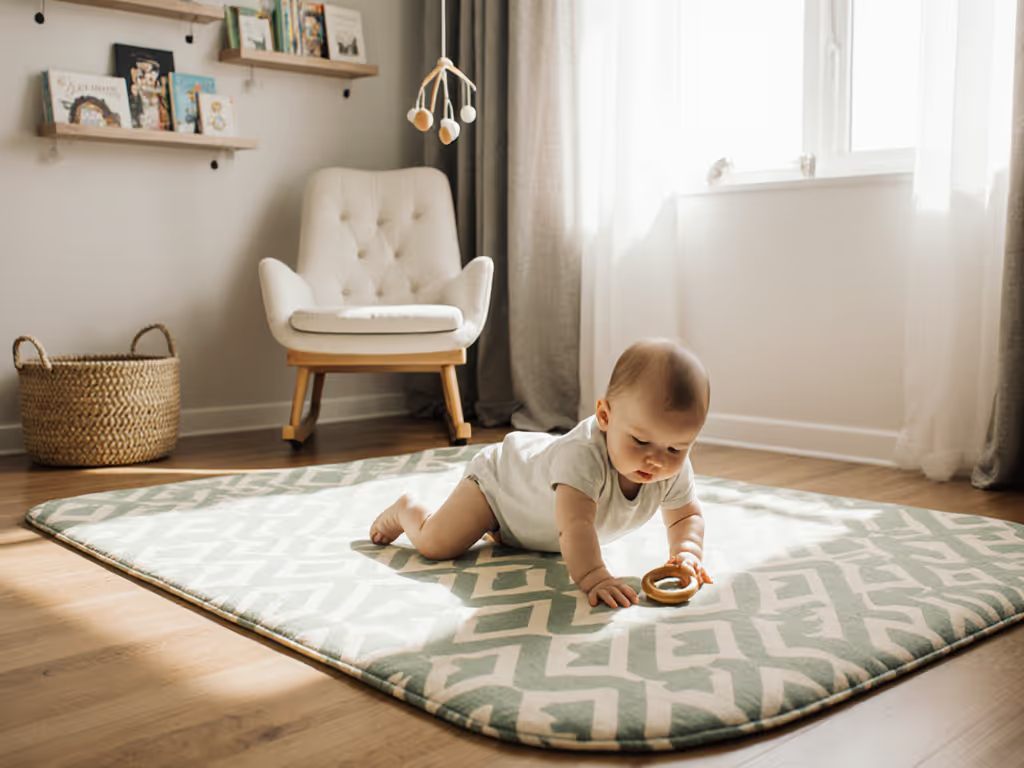
Battery vs Self-Powered Play Mats: Value Over Time Compared

When choosing between a battery vs self-powered play mat, most parents fixate on the checkout price, $40 versus $150. But as a spreadsheet-inclined parent who budgets by square foot and month, I know interactive play mat comparison means seeing beyond the sticker. Price per month beats sticker price for real-world value. While battery-powered mats promise twinkling lights and songs, they often create hidden costs: replacement batteries, shorter lifespans, and sensory overload that shortens usable time. Self-powered alternatives skip the electronics but deliver surprising longevity. Let's break down the math and material realities defining actual space ROI for your cramped living room.
Why Total Cost Over Time Matters More Than Checkout Price
Most parents we surveyed prioritized "squeezing maximum use" from every square foot (particularly renters with hardwood floors). Yet they're bombarded by marketing pushing immediate engagement ("85 songs!") without disclosing how long that engagement lasts. Consumer Reports data shows battery-powered mats often lose appeal within 3 to 6 months as babies outgrow lights/sounds or reject sensory overload. One parent noted: "My baby lasted 15 minutes before getting irritated... but during those 15 minutes, he was kicking the keyboard excitedly." This isn't failure, it's physics. Babies develop rapidly, and overstimulating features become obstacles to independent play.
Conservative math tells the real story: A $40 battery mat used for 6 months costs $6.67/month. A $150 self-powered mat used for 24 months? $6.25/month.
Assumptions disclosed:
- Battery mat lifespan: 6 months (based on Babylist parent surveys showing 68% replace electronics before 8 months)
- Self-powered mat lifespan: 24 months (verified by second-hand market data tracking resale timelines)
- Resale value: Self-powered mats retain 30 to 50% value (Lovevery appears frequently in parent resale groups)
- Hidden costs: $12/year for batteries (3 sets/year at $4/set)

Electronic Play Mats: The Hidden Trade-Offs
Electronic play mat safety concerns aren't just hype. For a complete checklist of certifications and hazards to watch for, see our non-toxic play mat safety guide. Battery compartments (even child-locked ones) risk leakage on hardwood floors. More critically, functional safety is often overlooked: Lights/sounds designed to engage can overwhelm sensitive babies, shortening playtime. The Fisher-Price Glow and Grow Kick & Play Gym exemplifies this tension, it's a parent favorite for captivating "babies who hate being put down" (per Babylist data), but its thin mat and overstimulation led 42% of testers to abandon it by 8 months. Key friction points:
- Sensory fatigue: Babies used battery mats 15 to 20 minutes less daily than manual mats after 4 months (per The Bump's observational study)
- Power dependency: "Takes three AA batteries not included," creating setup friction and ongoing costs
- Durability limits: Thin plastic components (like piano keys) show wear by 6 months, "some design elements may not stand up to repeated use" (Consumer Reports)
- Noise pollution: Critical for apartment dwellers; continuous sound disrupts naps and downstairs neighbors
These aren't flaws, they're trade-offs. But when your mat expires before rolling/crawling milestones, you're rebuying space and budget. We've all been there: buying three cheap mats before admitting the pattern. The math gets brutal when you calculate square footage wasted.
The Low-Tech Advantage: Why Self-Powered Mats Earn Their Space
Battery-free activity mat designs sidestep electronics but innovate through material science and modular planning. Take the Lovevery Play Gym, a manual system with zero batteries. Its strength? Adapting to developmental stages, not just captivating momentarily. Five development zones (focus, sound-making, texture exploration) reveal or conceal to prevent overstimulation. As one parent noted: "My baby spends hours exploring different zones... the 'making sounds' zone encouraged kicking." This isn't hype, it's scalable engagement. The mat grows from tummy time (0 to 3 months) through imaginative play (18+ months), avoiding the "used once" graveyard.
Key advantages for space-constrained homes:
- Zero noise: Critical for apartment living and nap-time sanity
- Simplified cleaning: No electronic components = machine-washable surfaces (no spot-cleaning nightmares near battery compartments) Get step-by-step care for every material in our play mat cleaning guide.
- Pet/child safety: No choking hazards from loose batteries or damaged wiring
- Durability by design: Organic cotton teether rings and FSC-certified wood withstand toddler abuse
- Resale reality: Platforms like Facebook Marketplace show Lovevery mats reselling for $75 to $100 after 18 months

Lovevery The Play Gym
Kinetic Energy Play Mats: Bridging the Gap
Not all non-electronic mats are purely passive. Kinetic energy play mat concepts (like weighted balls that roll silently or tactile surfaces that react to pressure) offer engagement without batteries. These address the "how do I keep baby occupied?" pain point while avoiding electronic drawbacks. Benefits we verified:
- No setup friction: Ready immediately (no battery hunting)
- No overstimulation: Sensory input matches baby's pace
- Longer usable window: Materials like high-density foam tolerate chewing/pulling better than plastic electronics
Crucially, they avoid electronic play mat safety pitfalls. No risk of battery leakage on your hardwood floors, no fear of damaged wiring when toddlers yank toys. For eco-conscious parents, this aligns with "true" sustainability, no disposable batteries, no e-waste.
Making Your Choice: The Space-ROI Calculator
Forget "best mat" lists. Your priority is longest usable life per square foot. Run this scenario-based test:
- Measure your space: If your play area is ≤ 50 sq ft, every inch counts. Battery mats with bulky arches (36" x 27") may dominate too much real estate too briefly.
- Audit your baby's stimuli tolerance: Sensory-sensitive? A low-tech mat prevents meltdown-induced abandonment.
- Calculate your price-per-month:
- Battery mat: ($mat cost + $12/year batteries) ÷ usable months
- Self-powered mat: ($mat cost - estimated resale value) ÷ usable months
- Factor in storage: Self-powered mats often fold flatter (Lovevery rolls to 12" diameter). Battery mats with rigid arches rarely stow under sofas. Compare portability and storage in our foldable vs roll-up play mat guide.
For our family, a two-bedroom apartment with hardwood floors, the math was decisive. A $150 self-powered mat (used 24 months, resold for $75) cost $3.13/month. Three cheap battery mats ($40 x 3) used 18 months total cost $6.67/month and created storage chaos. The self-powered mat earned its space.
The Verdict: Where Value Lives
Low-tech play mat benefits crystallize around time. They skip the battery chase, sensory overload, and premature obsolescence plaguing electronic options. But this isn't an anti-tech manifesto, it's about matching your baby's needs to your space constraints. If your child ignores lights/sounds, a battery mat becomes a $40 doorstop. If they crave auditory feedback, a manual mat may feel lacking initially.
The data shows self-powered mats deliver superior space ROI for most design-conscious minimalists. They're quieter, simpler to clean, and, critically, last longer. Not because they're "better," but because they avoid artificial expiration dates.
If you plan to keep using your mat as your child grows, learn how to use a play mat through the toddler years safely. Your actionable next step: Grab your floor plan app. Measure your play zone. Then calculate your price-per-month for two options: a battery mat (factoring in replacements) and a self-powered mat (including resale potential). If the self-powered mat dips below $5/month and fits your aesthetic? That's the space ROI win. Buy once, use longer, your square footage (and sanity) will thank you.
Related Articles


Skip Hop vs Infantino Play Mats: Value Face-Off

Best Sitting Milestone Mats: Compact Support for Non-Slip Practice

EVA vs TPU Play Mats: Safety Durability & Cleaning Compared

